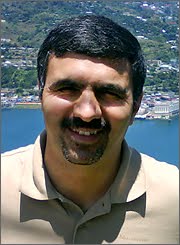Recycling in Sweden has well developed, where the wastes are separated by people to ca 30 fractions and treated or recycled separately. Glasses (coloured and transparent), metals, packaging (papers and plastics) and newspapers are the recycling materials in large amounts, that a company named FTI has responsibility to collect and send to the recycling. They have the containers everywhere usually in waking distance to each households. However, one problem when to empty these containers. If they come too often, the containers are half empty and transportation costs increases; and if the come too rarely they become full and angry people...
Now, after a test period, 1000 (out of 6000) containers for glass recycling are equipped with a level meter using ultrasound, which measure how full is the container and send a signal to the company to send the trucks to empty them. This system that is developed by a Agade, seems work well and they can save both money and CO2 with more effective transportation.
Now, after a test period, 1000 (out of 6000) containers for glass recycling are equipped with a level meter using ultrasound, which measure how full is the container and send a signal to the company to send the trucks to empty them. This system that is developed by a Agade, seems work well and they can save both money and CO2 with more effective transportation.




















